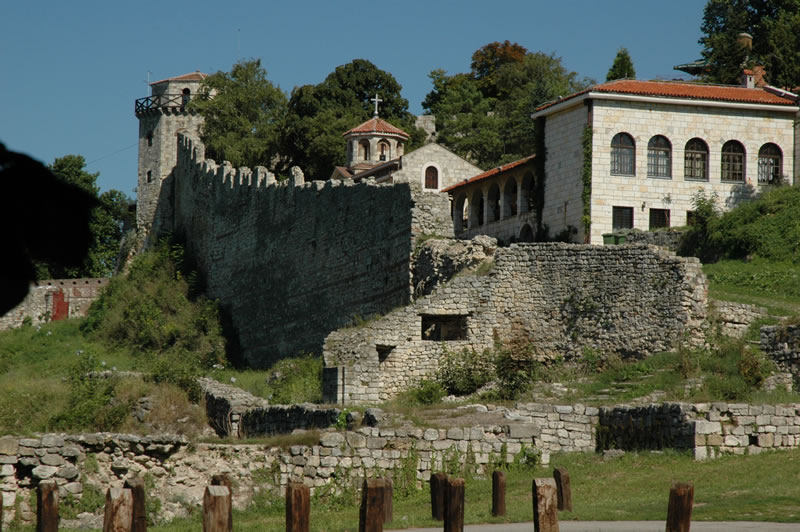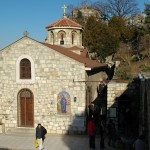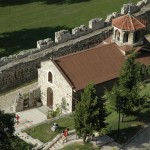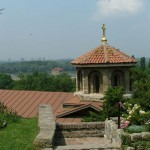St. Petka Chapel, together with the Ruzica Church, is one of the most revered sanctuaries in Belgrade. It was built above a spring that has been considered miraculous since the Middle Ages, connecting with the cult of St. Petka.
It is not known what the original chapel built on this site looked like, of which only the vaulted space above the spring itself has survived. The current chapel was built in 1937, according to the design of the architect Momir Korunovic. It was built in the style of Serbian medieval church architecture and fits very well into the ambience of the Eastern suburbs. At first, there were frescoes in the church but these quickly fell into disrepair, so the entire interior was decorated with mosaics instead. Next to the chapel was once a boarding house, which was destroyed during the Anglo-American bombing in 1944. The current building was erected in its place.
Saint Petka, the Venerable Mother Paraskeva, was born near Constantinople at the very end of the 10th century. She spent her ascetic and angelic life in the Jordan desert, where she left after the death of her parents. Towards the end of her life, she returned to her hometown where she passed away. Her miraculous relics have been moved several times. At the end of the 14th century, with the efforts of Princess Milica, the relics were first transferred to Krusevac and then to the newly built Serbian capital, Belgrade. After the conquest of Belgrade in 1521, Sultan Suleiman ordered that a large part of the city’s population move to Constantinople, allowing it to take with it precious relics, including the relics of the Holy Empress Theophanes and Saint Petka, as well as the icon of the Holy Mother of God. Today, the relics of St. Petka are located in the city of Iasi in Romania.
The Serbian Orthodox Church celebrates St. Petka’s day on 27th October.
Architect Miomir Korunovic was in charge of the project. While digging the grounds for the Church of St. Petka, the bones of Serbian soldiers died while defending Belgrade in 1914-1915 were found.





